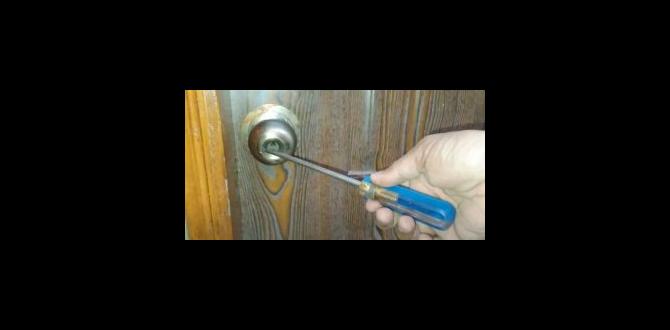Table of Contents
Unlocking The Mystery: Rough Opening Interior Doors Explained Unlocking The Mystery Of Rough Opening Interior Doors Is Essential For Homeowners, Builders, And Diy Enthusiasts Aiming For Seamless Installations. A Rough Opening Is The Framed Space That Allows A Door To Fit Properly Within A Wall, And Understanding Its Dimensions Is Crucial For Ensuring That Doors Function Effectively And Aesthetically. What Is A Rough Opening? A Rough Opening (Ro) Refers To The Space In The Framing Of A Wall Where A Door Or Window Will Be Installed. It Is Larger Than The Actual Door Size To Accommodate The Door Frame, As Well As Any Hardware And Shims Needed For A Secure Fit. Typically, The Rough Opening For Interior Doors Is About 2 Inches Wider And 2 To 2.5 Inches Taller Than The Door Itself. Importance Of Accurate Measurements When Installing Interior Doors, Accurate Measurements Are Vital. An Incorrect Rough Opening Can Lead To Various Problems, Such As Gaps, Misalignments, Or Complications During The Installation Process. To Prevent These Issues, It’S Advisable To Measure The Door’S Width And Height First, Then Add The Extra Dimensions Required For The Rough Opening. How To Measure Rough Opening Dimensions 1. **Measure The Door Size**: Start By Measuring The Width And Height Of The Door. 2. **Add Extra Space**: For Most Interior Doors, Add 2 Inches To Both Width And Height. – Example: A 30-Inch Wide Door Will Require A Rough Opening Of Approximately 32 Inches, And A 80-Inch Tall Door Will Mean You Need A Height Of About 82 To 82.5 Inches For The Rough Opening. 3. **Check For Level And Plumb**: Ensure That The Rough Opening Is Level And Plumb, Which Is Crucial For A Proper Door Installation. Types Of Interior Doors When Planning Your Interior Door Project, Consider The Different Types Of Doors Available, Including: – **Hollow Core Doors**: Economical And Lightweight, Great For Interior Use. – **Solid Core Doors**: Offer Better Sound Insulation And Durability. – **French Doors**: Provide Elegance And Openness Between Spaces. – **Sliding Barn Doors**: Trendy And Space-Saving Solutions. Conclusion Unlocking The Mystery Of Rough Opening Interior Doors Is Fundamental In Any Construction Or Remodeling Project. Understanding The Specifications And Nuances Involved In Precise Measurements Can Make The Difference Between A Diy Success And A Frustrating Installation. With Careful Planning And The Right Tools, You Will Ensure That Your Interior Doors Fit Perfectly, Enhancing Both Functionality And Appearance In Your Spaces.

Unlocking the Mystery: Rough Opening Interior Doors
Understanding rough openings for interior doors helps with smooth installations. A rough opening is the space where the door frame fits. It’s crucial to measure correctly for a perfect fit. Did you know that a small mistake can lead to gaps or misalignment? Imagine trying to close a door that won’t budge! Knowing how to prepare your rough opening can save time and frustration. Master this skill to ensure your doors work just right!Understanding Rough Openings
Definition and purpose of rough openings in door installations.. Importance of accurate measurements for successful door fitting..Rough openings are spaces in walls where doors are placed. They help ensure doors fit properly and look good. Accurate measurements are essential for the success of door fitting. If the rough opening is too big or too small, it can cause problems. A door may not close well, or it might look uneven. Taking time to measure carefully avoids these issues.
What is a rough opening?
A rough opening is the frame that holds a door before it is installed. It needs to be the right size for the door to fit well.
Why are measurements important?
- Correct size ensures a good fit.
- Avoids gaps and drafts.
- Helps door operate smoothly.
Remember, a well-measured rough opening can make all the difference! It can save time and money during installation.
Importance of Correct Measurements
Measuring techniques for rough openings.. Common mistakes in measurement and how to avoid them..Measuring for rough openings is like baking a cake. Get the measurements wrong, and you might end up with a door that doesn’t fit! Using a level, tape measure, and square can help make sure everything lines up nicely. Avoid the common mistake of measuring only once! Remember, even a tiny error can lead to big problems. Always double-check your measurements. It’s best to measure twice and cut once! Below is a quick guide:
| Measuring Technique | Common Mistakes |
|---|---|
| Use a Level | Not checking for plumb |
| Measure Width & Height | Only measuring one side |
| Check Corners | Ignoring square corners |
By following these tips, you can ensure your new door fits like a glove instead of being stuck like a bad joke!
Materials Used in Door Frames
Common materials for framing rough openings (wood, metal, etc.).. Impact of material choice on installation and durability..Building a door frame needs careful thought about materials. Common options for framing rough openings are wood and metal.
- Wood: Strong and easy to work with. It can warp if wet.
- Metal: Very durable and resistant to pests. It’s heavier and can be tricky to install.
Your choice affects how well the door works and how long it lasts. A solid material ensures a secure fit, keeping your door steady and functional.
What materials are best for door frames?
Choosing the right material is key to a strong door frame. Wood and metal are preferred choices based on durability and ease of use.
Framing Techniques for Rough Openings
Best practices for framing rough openings.. Tools and materials required for proper framing..To create a strong rough opening for doors, you need good framing techniques. First, measure the space accurately. Make sure to leave extra room for adjustments. Use strong materials like 2×4 lumber for framing. Don’t forget essential tools, such as:
- Measuring tape
- Level
- Hammer
- Nails or screws
- Saw
Always check your work as you go. This ensures the door fits well and opens without trouble. Good framing makes a big difference!
What are best practices for framing rough openings?
Best practices include accurate measurements, sturdiness, and using the right materials. Always make sure the frame is square and level for smooth door operation.
Installing Interior Doors
Stepbystep guide to properly installing a door in a rough opening.. Tips for adjusting doors after installation for optimal performance..First, gather your tools. You will need a measuring tape, level, and screwdriver—no magic wands here! Measure the rough opening to ensure it fits your door frame snugly, like a fish in its bowl. Next, place the door in the opening and check if it swings freely. If it sticks, you might need to adjust the hinges or trim the door a bit. Easy-peasy!
After hanging the door, test it. It should open and close smoothly. If not, give those hinges a little love by tightening the screws. Don’t forget to check if the gaps are even. A door that’s too high or low can look a bit like a slouching turtle!
| Step | Action |
|---|---|
| 1 | Measure the rough opening |
| 2 | Install hinges |
| 3 | Hang the door |
| 4 | Adjust & test |
Remember, even the best doors need a little TLC to stay in top shape! With some care, you can unlock the mystery of smooth-sailing interior doors.
Common Issues and Solutions
Identifying issues with rough openings and improper fits.. Solutions for addressing gaps, misalignments, and other common problems..Rough openings can be tricky! If your door doesn’t fit just right, it can lead to annoying problems. Common issues include gaps between the door and frame or misalignment that makes it hard to open. To fix these, you might need shims or weather stripping. Need a visual? Check out this handy table:
| Issue | Solution |
|---|---|
| Gap at the top | Add a shim |
| Door won’t close | Realign hinges |
| Drafts coming in | Use weather stripping |
With a little patience, you can have your door fitting perfectly! Remember, even the best doors need a little love now and then.
Maintenance Tips for Interior Doors
Best practices for maintaining and caring for interior doors.. Signs that indicate when a door needs repair or replacement..Taking care of your interior doors is like giving them a spa day! Regularly check for cracks or strange noises. If your door squeaks louder than a mouse on stilts, it might need oiling. Signs like sticky hinges or a door that doesn’t close properly mean it’s time for some TLC. When doors start looking like they’ve been through a wrestling match, maybe it’s time to replace them! Below are some quick maintenance tips:
| Maintenance Tip | When to Replace |
|---|---|
| Oil hinges often | Hinges are rusty or break |
| Clean with a damp cloth | Visible damage or scratches |
| Check for alignment | Stops functioning properly |
Remember, doors should welcome you, not give you a workout! Keep them happy, and they’ll keep you happy too.
Conclusion
In conclusion, unlocking the mystery of rough opening interior doors helps you choose the right size and style for your space. Remember to measure carefully and understand your options. This will ensure a perfect fit and enhance your home’s look. For more information, you can explore guides online and even ask a local expert for advice. Happy decorating!FAQs
What Is The Standard Rough Opening Size For Interior Doors, And How Does It Vary By Door Type And Style?The standard rough opening size for interior doors is usually 2 inches wider and 2.5 inches taller than the door itself. For example, a door that is 30 inches wide will need a rough opening of 32 inches. Different door types, like sliding doors or French doors, may need different sizes. So, it’s important to check the door’s size before building the opening.
How Do You Measure A Rough Opening For An Interior Door To Ensure A Proper Fit?To measure a rough opening for an interior door, you first need a tape measure. Start from the floor and measure the height. Then, measure the width by checking the space between the wall studs. Make sure to measure at the top, middle, and bottom. Write down your measurements so you can choose the right door size!
What Factors Should Be Considered When Framing A Rough Opening For A Pre-Hung Interior Door?When framing a rough opening for a pre-hung interior door, you need to think about size. Measure the door to know how big the opening should be. You should also leave space around the door for adjustments. Don’t forget about the floor; it should be level. Finally, make sure the walls are straight so the door can hang properly.
What Materials Are Typically Used For Framing And Finishing A Rough Opening For Interior Doors?To frame and finish a rough opening for interior doors, we usually use wood. Common types are pine or plywood. We also need nails and sometimes screws to hold everything together. For finishing, we might add trim or paint to make it look nice.
How Can Improper Measurements Or Framing Affect The Installation And Functionality Of Interior Doors?Improper measurements can make doors too big or too small. If the door doesn’t fit the frame, it can get stuck or not close properly. This means you can’t use the door easily. We need to measure carefully so doors work well and look nice. If the frame is messed up, even a perfect door won’t work right.







